The mysterious places around the world experts can't explain
Strangest things
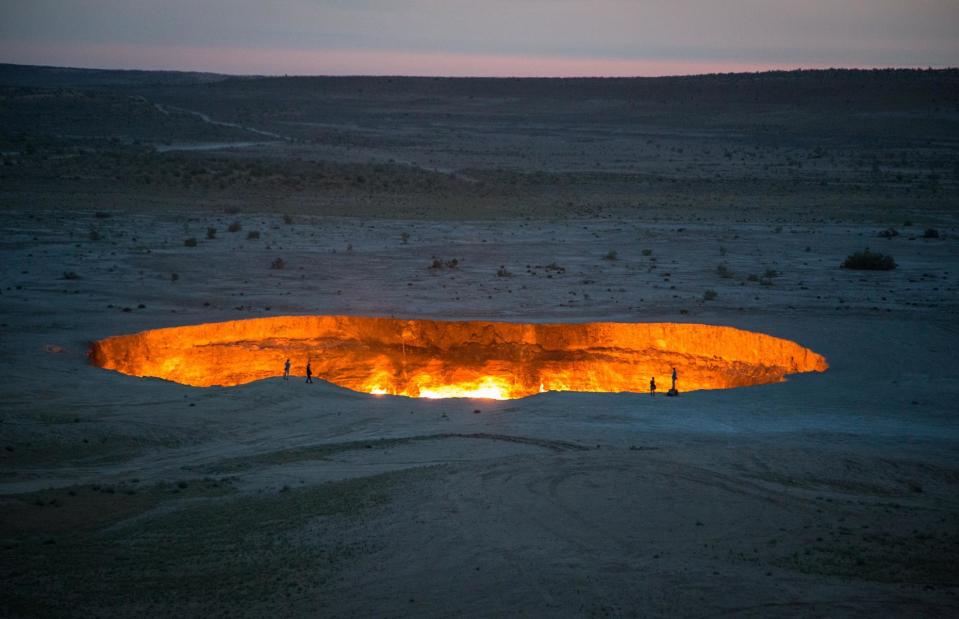
Iwanami Photos/Shutterstock
Who doesn’t love a good mystery? The world is full of places that are surreal, eerie and sometimes downright bizarre. And, while many of these mysterious goings-on have logical explanations, others remain stubbornly unsolved. Read on to follow the science, stories, theories and tales surrounding some of the world’s strangest sites.
Bermuda Triangle
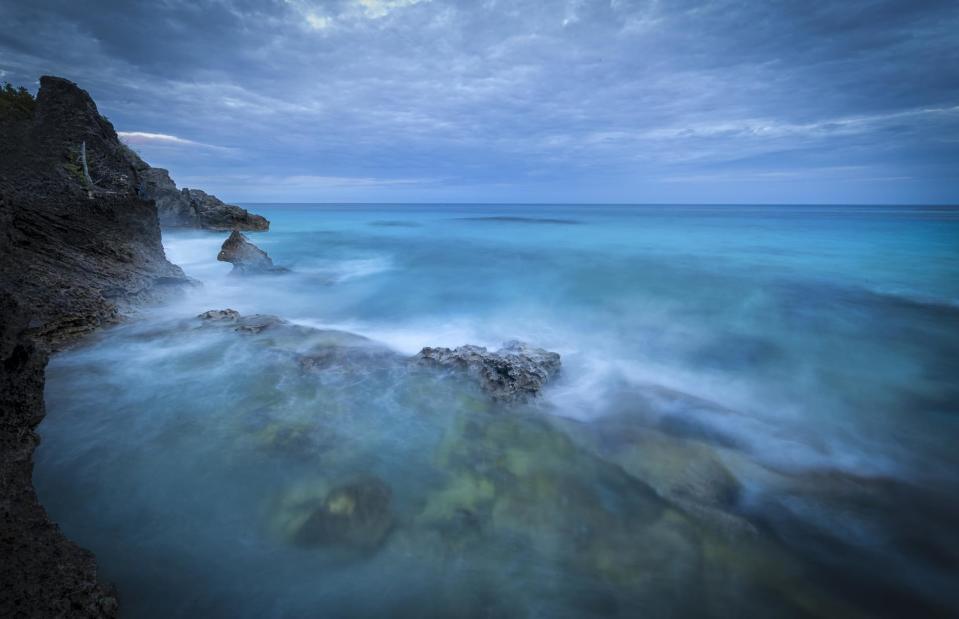
thierry dehove/Shutterstock
The Bermuda Triangle – covering around 500,000 square miles (more than 1,290,000sq km) between Bermuda, Miami in Florida and San Juan in Puerto Rico – has seen more than 20 planes and 50 ships crash with no obvious explanation and even some “vanish” completely. Theories range from suggestions of supernatural activity to the more logical hypotheses that it’s down to magnetic compass variation or rogue waves.
Richat Structure, Mauritania

TommoT/Shutterstock
Astronauts have been watching the Richat Structure – also known as the Eye of Sahara – in Ouadane since humans first entered space. Viewed from the International Space Station, the 30-mile (48.2km) wide swirl resembles a bull’s eye or snail’s shell. The geological quirk was believed to be a crater caused by a meteorite but it’s now thought it was once a dome that has eroded over time.
Stonehenge, England
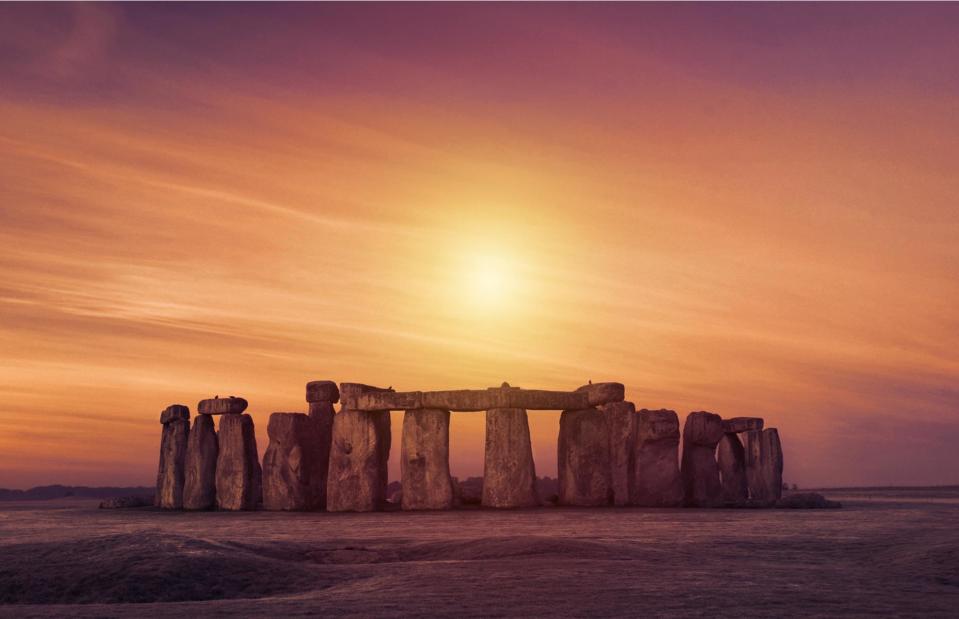
Enea Kelo/Shutterstock
This circle of rocks has long been one of the UK’s most well-known and mysterious sites, with historians and scientists baffled as to how its builders transported the monoliths 5,000 years ago. In 2019, Newcastle University students may have solved the riddle when they discovered that humans (not aliens) may have dragged the rocks in place using sledges lubricated with pig fat.
Eternal Flame Falls, New York, USA
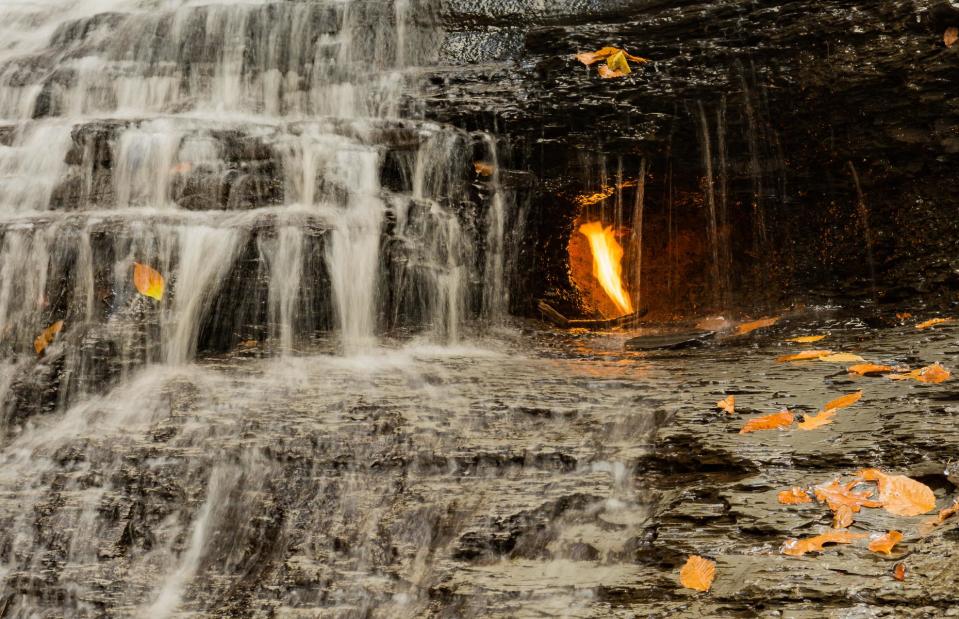
Jay Ondreicka/Shutterstock
It’s nothing to do with The Bangles’ hit song, but this is an (almost) eternal flame. The bewitching orange-red glow that flickers behind this staggered waterfall, in New York’s Chestnut Ridge Park, is kept aflame by natural methane gas that seeps through cracks in the rock. It’s occasionally extinguished by splashes but visitors can bring it back to life with a lighter.
Magnetic Hill, New Brunswick, Canada
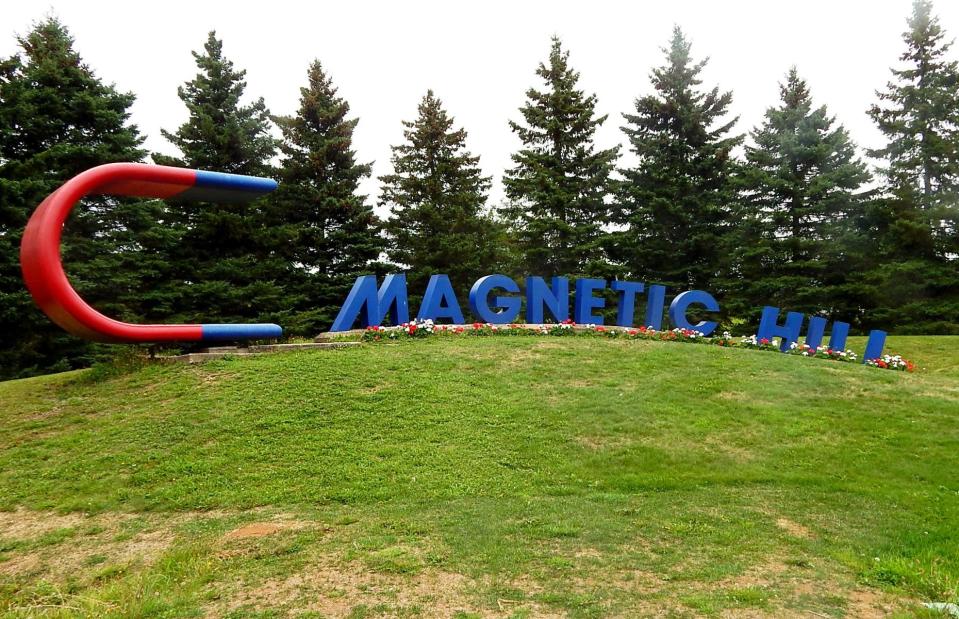
MollieGPhoto/Shutterstock
Cars roll backwards and, apparently, upwards after driving to the bottom of this so-called “magnetic hill” in Moncton, New Brunswick. But it isn’t actually defying the laws of gravity. It’s one of several hills around the globe where what looks like an uphill incline is, in fact, part of a larger downhill incline. It's an optical illusion because there’s no view of the horizon for perspective.
Uluru, Australia
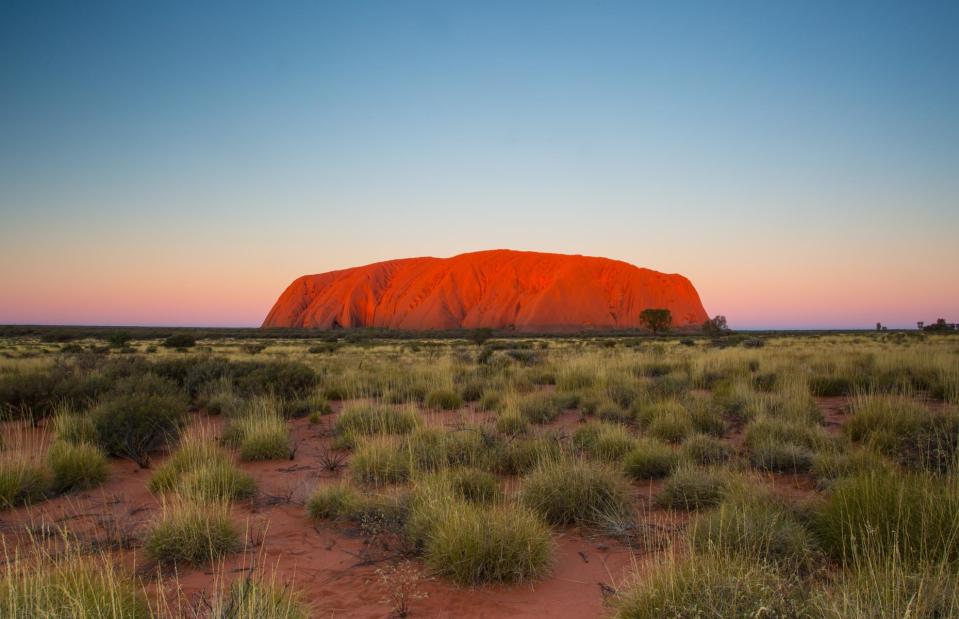
FiledIMAGE/Shutterstock
Uluru or Ayers Rock, in Uluru-Kata Tjuta National Park in Australia’s Northern Territory, has beguiled people for centuries and is a sacred spot for Anangu people, with theories that it was formed by ancestral beings who shaped the world. Science suggests the sandstone monolith began forming around 550 million years ago, and centuries of erosion and folding crafted its distinctive oval shape. Its red surface is due to oxidation, while “fresh” rock beneath is gray.
Marfa Lights, Texas, USA
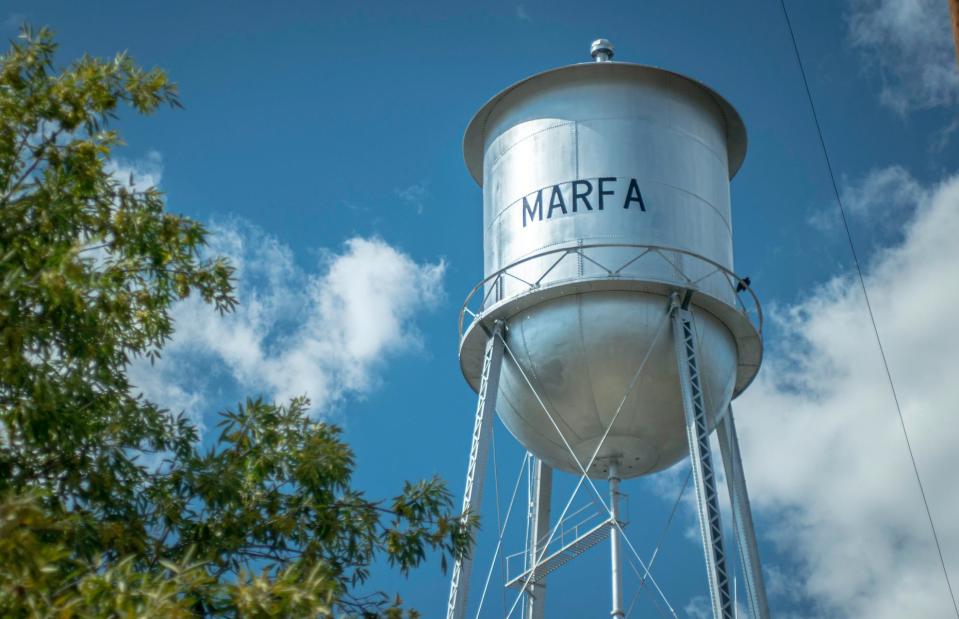
Travel_with_me/Shutterstock
On clear nights, lights twinkle on the horizon just outside the hip Texan town of Marfa, and they’ve been baffling onlookers for more than 135 years. The bright orbs throb or, some say, move across the sky. Even James Dean, in Marfa filming the movie Giant, was spooked and captivated by the still-unexplained phenomenon. Theories on what they are include UFOs, ghosts of Spanish conquistadors and car headlights.
Winchester Mystery House, California, USA
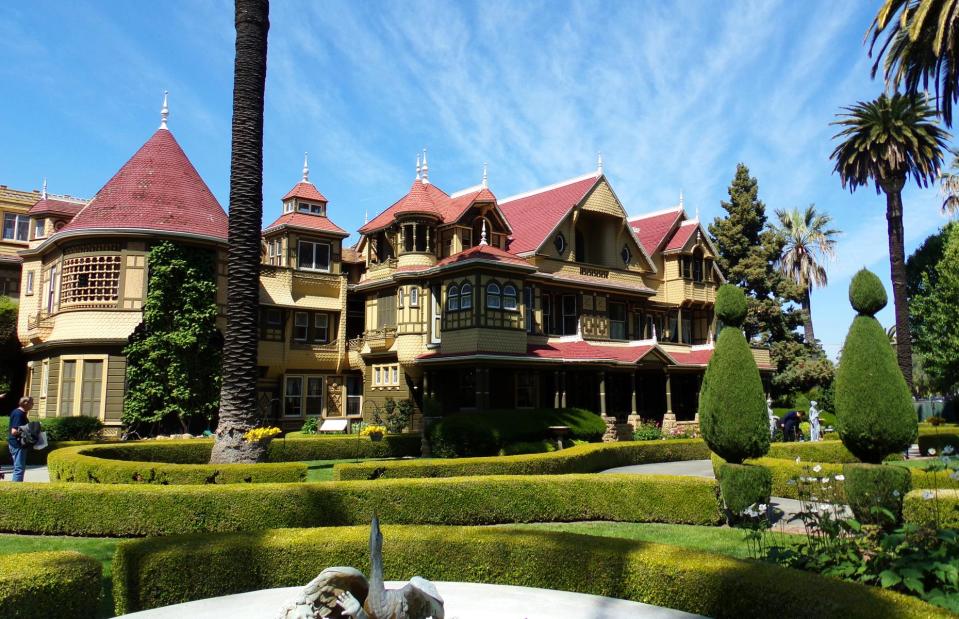
Sanseven/Shutterstock
Sarah Winchester, whose late husband had invented the Winchester rifle, bought this San Jose mansion in 1886 and spent three decades creating a labyrinth of 160 rooms, two basements, 10,000 windows and 2,000 doors, many of which lead to sudden drops. Staircases lead to ceilings and dead ends. A popular theory is that, haunted by those killed by her late husband’s invention, she created a maze to keep malevolent spirits at bay.
Nazca Lines, Peru
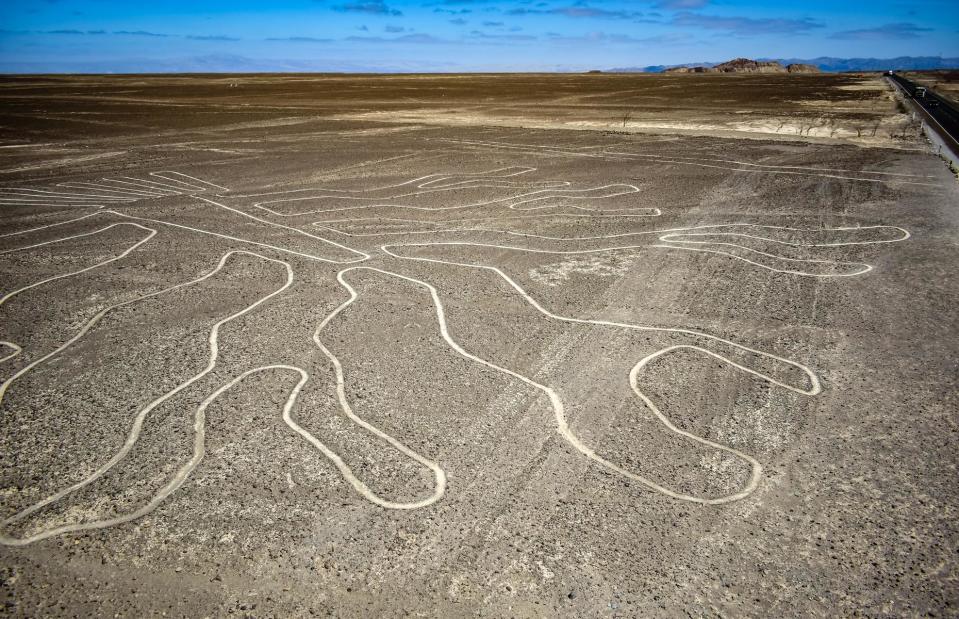
Marcos E Ramos Ponciano/Shutterstock
Around 300 figures from a spider to a hummingbird are etched into the sands in the southern Peruvian desert, with some lines stretching more than five miles (3.2km). The pre-Columbian geoglyphs, which cover around 200 miles (322km), long had celestial associations or were seen as a giant calendar. Now the most popular theory is that they marked the locations of rituals surrounding water and crops – although the truth remains elusive.
Roswell, New Mexico, USA
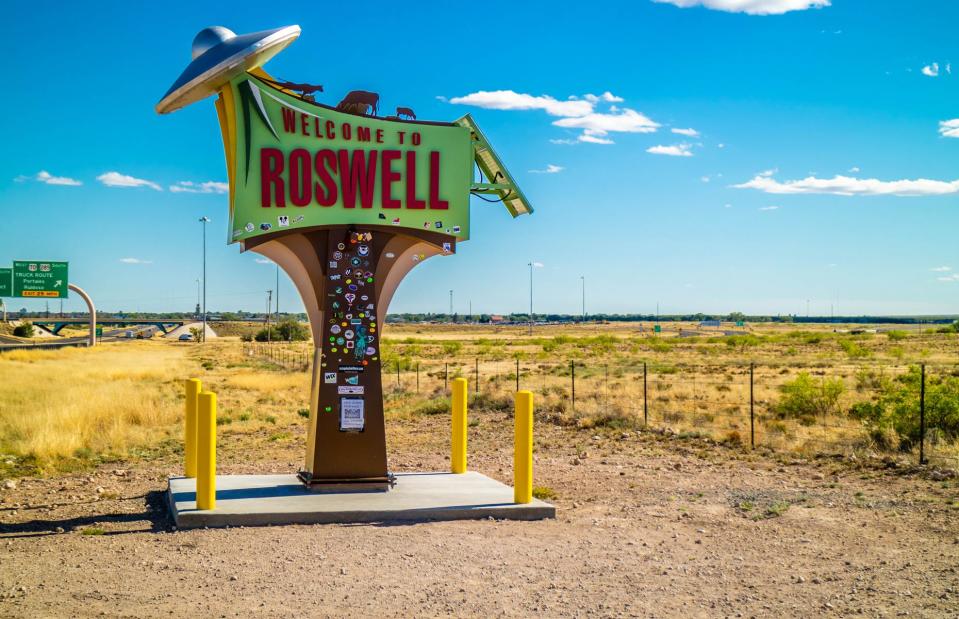
Cheri Alguire/Shutterstock
Roswell is perhaps the ultimate spot for alien conspiracy theories. The small New Mexico city hit headlines when, in 1947, a ranch worker claimed to have stumbled upon debris from a flying saucer crash. It was quickly explained as a weather balloon that crashed, although the rumors never died.
Fairy Circles, Namibia
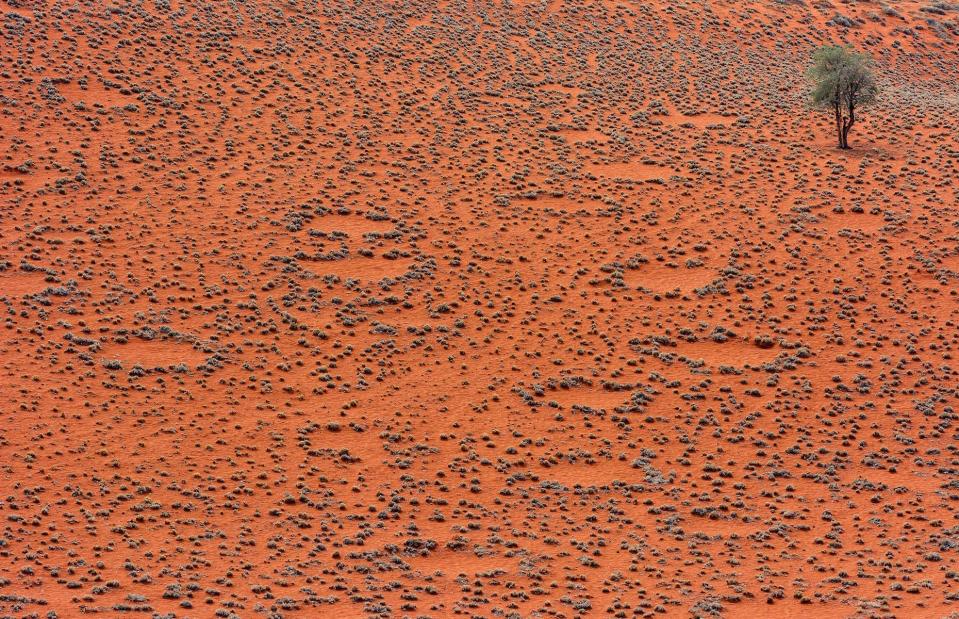
LUC KOHNEN/Shutterstock
Are these circular patches, dotted over the Namibian desert in their millions, the work of gods, aliens or, erm, termites? Obviously one answer is less romantic than the others, but it’s also the most logical theory scientists have come up with for the so-called fairy circles, which are only found here and in parts of Australia. There’s still no official explanation and studies continue.
Racetrack Playa, California, USA
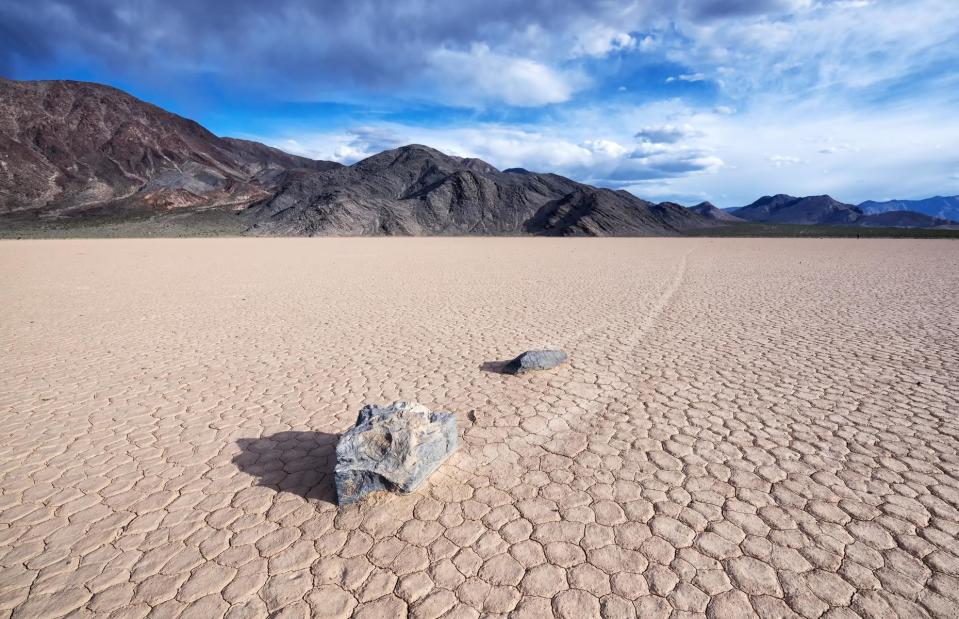
kojihirano/Shutterstock
Is it some unexplained magnetic force that causes rocks to glide across this cracked, dry lakebed in California’s Death Valley? Or the unseen hands of some higher power? Neither, it seems, as scientists debunked the mysteries in 2013, discovering the boulders are moved by wind when the ground is icy. It’s still a hauntingly beautiful – and delightfully odd – place.
Loch Ness, Scotland
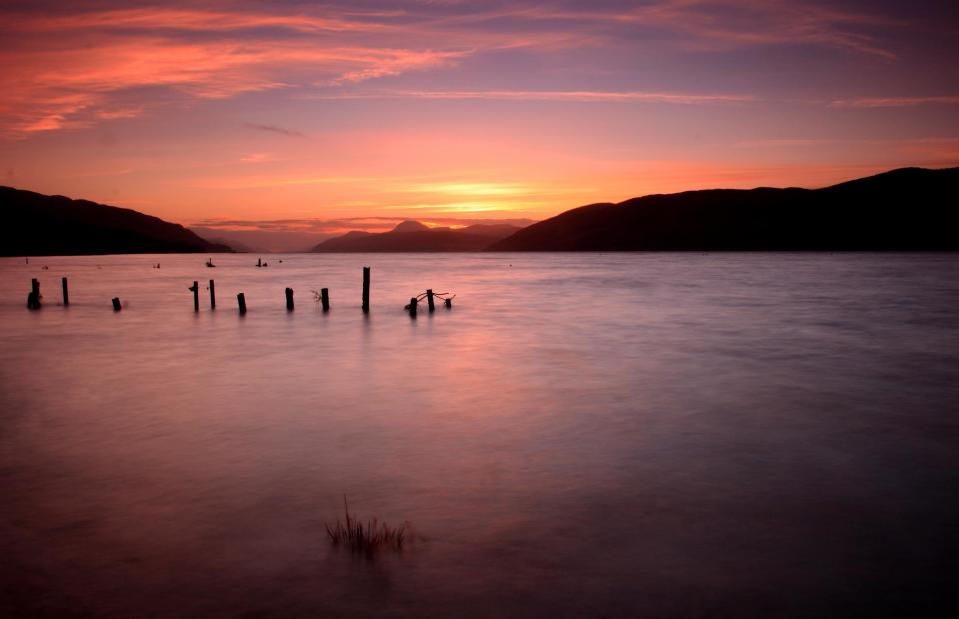
Graham Braid/Shutterstock
Proving that monsters are no barrier to popularity, Loch Ness in Scotland is world-famous thanks to the huge beast that may (or may not) lurk in its depths. The Loch Ness Monster, or Nessie, was first “sighted” in 1933, when a newspaper article dismissed the disturbance of the water’s surface as a duck fight. An infamous 1934 photo of the long-necked creature was later admitted to be a hoax. Latest theories suggest Nessie may be a giant eel or a tangle of fallen branches.
Bran Castle, Romania
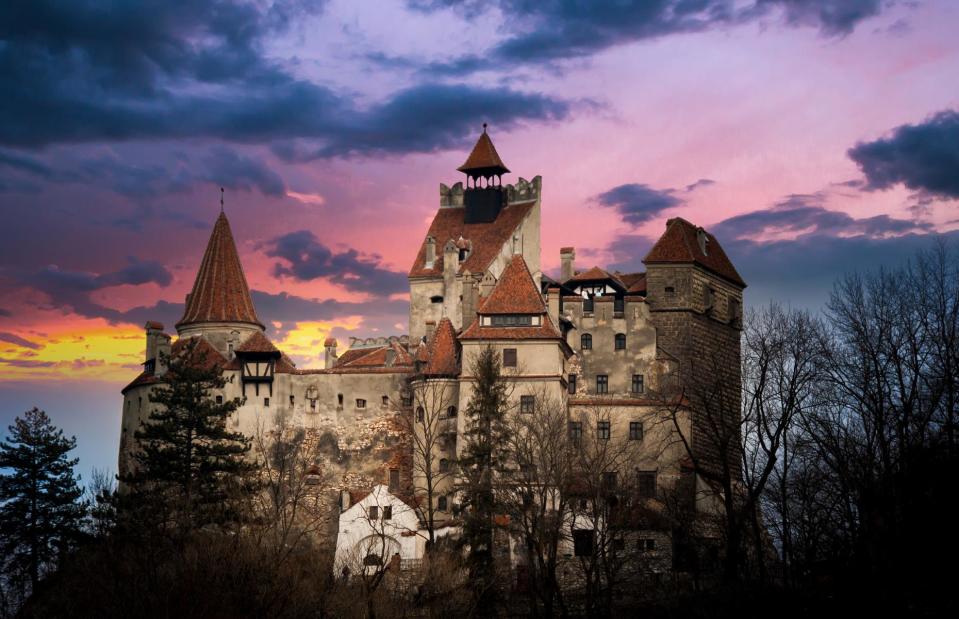
Lucian BOLCA/Shutterstock
Mystery shrouds this castle like an eerie dawn mist. Legend has it that bloodthirsty 15th-century ruler Vlad the Impaler – believed to have inspired Bram Stocker’s eponymous character in Dracula – was once imprisoned within its medieval walls. There’s no evidence that he even visited the place but it remains a creepy spot for Gothic fans.
Hoia-Baciu Forest, Romania
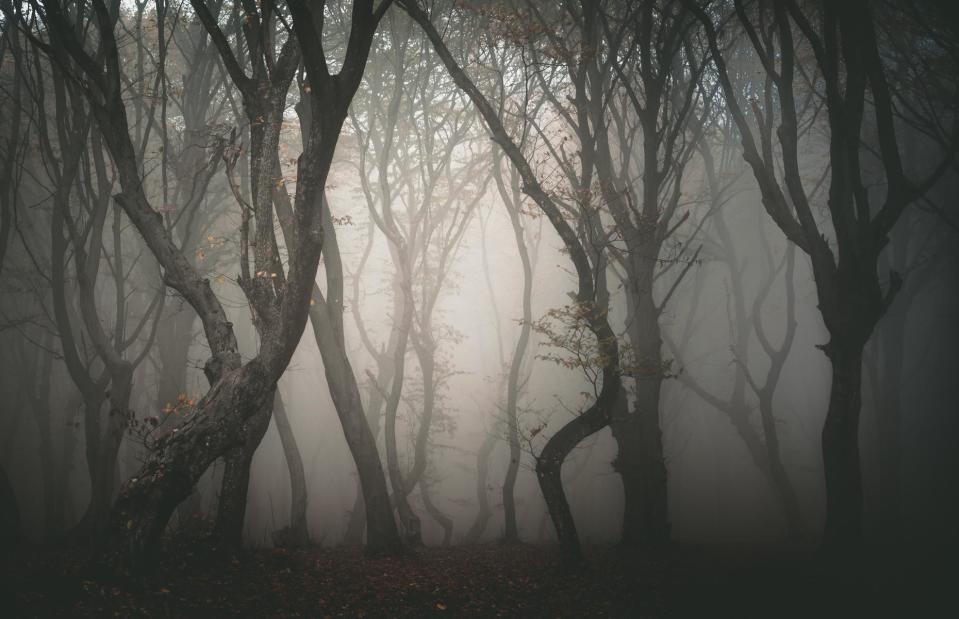
Daniel Marian/Shutterstock
Pretty much any forest can feel eerie when there’s no one else around and the trees are clung with mist. But Hoia-Baciu dials up the strangeness with crooked trees that twist and turn, as if frozen in dance. Legends tell of alien encounters and people vanishing in the woods (it’s been dubbed “the Bermuda Triangle of Romania”). The biggest mystery of all is The Clearing, a central area where nothing grows – and no one, yet, knows why.
Area 51, Nevada, USA
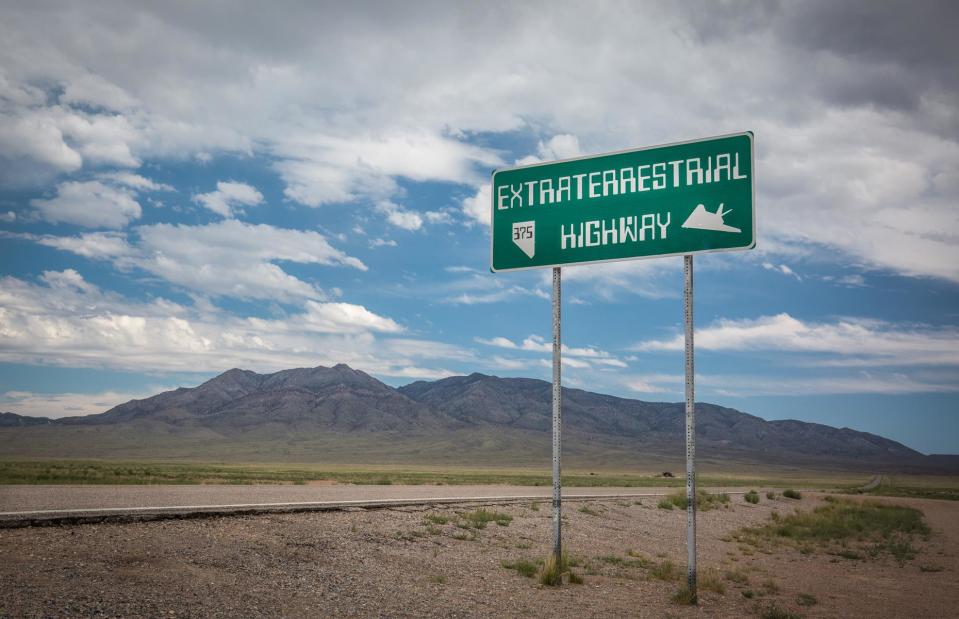
Nebs/Shutterstock
It’s the world’s most secretive airport and synonymous with conspiracy theories. This still-operational Air Force facility, known as Area 51, drew attention during its Cold War-era aircraft testing, spawning rumors of sinister experiments, a staged moon landing and a lab run by aliens. Entering the base is strictly forbidden (not to mention impossible).
Pine Gap, Australia
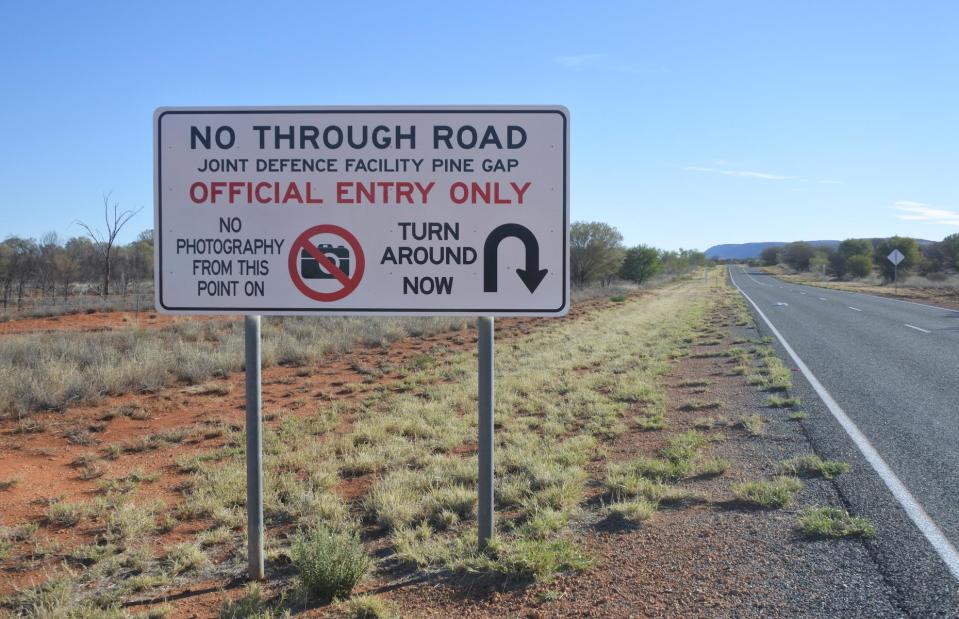
ChameleonsEye/Shutterstock
The Oz equivalent of Area 51, this satellite surveillance base in the middle of the Outback opened in the 1970s as a joint operation between the US and Australian governments. The Cold War spy facility was initially disguised as a space research facility, a misinformation that only fueled ongoing conspiracy theories about alien sights and chilling experiments.
Rock-hewn churches, Ethiopia
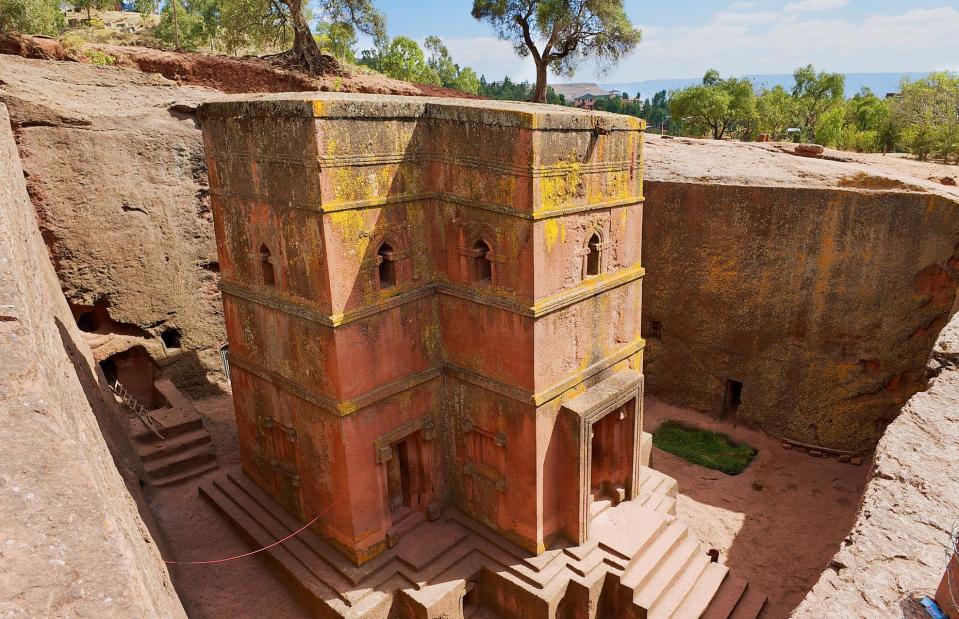
Dmitry Chulov/Shutterstock
The rose-hued rock churches of Lalibela are jaw-droppingly beautiful and the 11 monolithic structures become even more incredible when you hear their story. It’s said that King Lalibela, who reigned in the 12th and 13th centuries, carved each with help from the angels alone. While it’s more likely he was aided by thousands of slaves, their existence is certainly miraculous.
Kawah Ijen, Indonesia
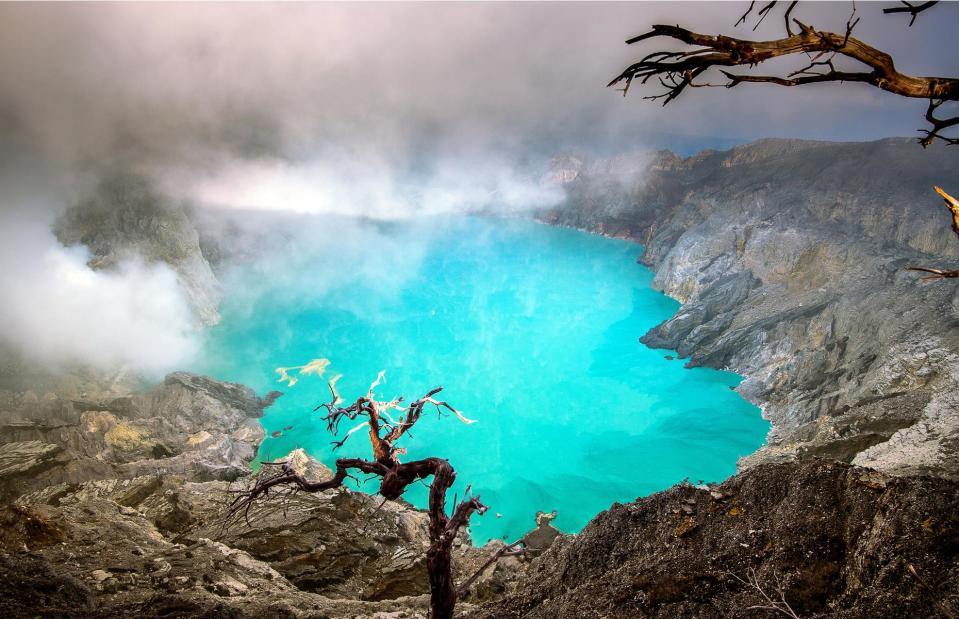
Guitar photographer/Shutterstock
These milky turquoise waters may look inviting for a swim but you wouldn't want to take a dip here – this caldera, formed in the crater of the Kawah Ijen volcano, is the world’s largest acidic lake. The electric blue flames that burst into the air are a source of fascination, although (of course) there is a scientific explanation. High levels of sulfuric acid, which give the water its striking hue, combust when they hit the air.
The Great Pyramid of Giza, Egypt
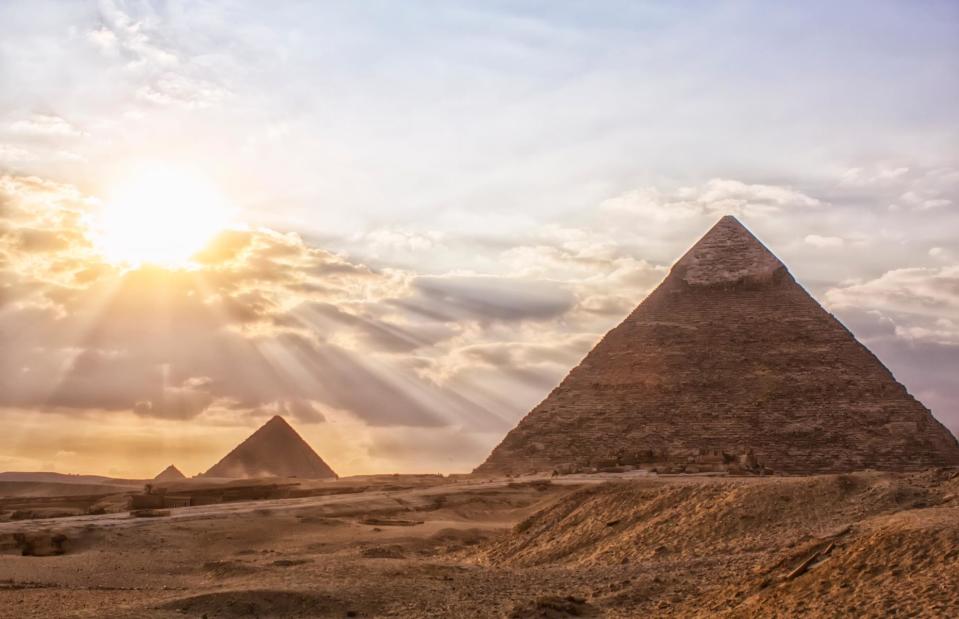
Ahmed Shiko/Shutterstock
Giza’s trio of pyramid tombs make up one of the globe’s most recognisable sights. The biggest of the three – the Great Pyramid of Giza or Khufu – is both the oldest of the Seven Wonders of the Ancient World and the only one still standing. Yet it’s still shrouded in mystery, with scholars continuously theorising as to how such a huge, intricate structure could be created without modern tools.
Lake Hillier, Australia
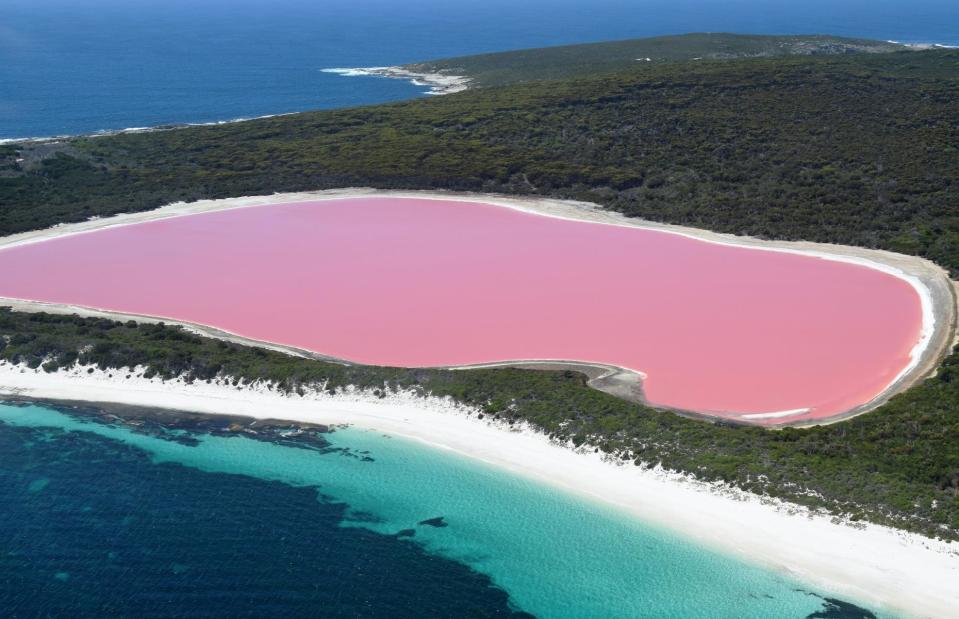
matteo.it/Shutterstock
Pink sand we can just about handle. But a bubblegum-coloured lake? From above, contrasting with the nearby blue of the Pacific, Lake Hillier is utterly surreal. Its colour is still something of a mystery but the most commonly accepted theories relate to the lake’s high salinity.
Crooked Forest, Poland
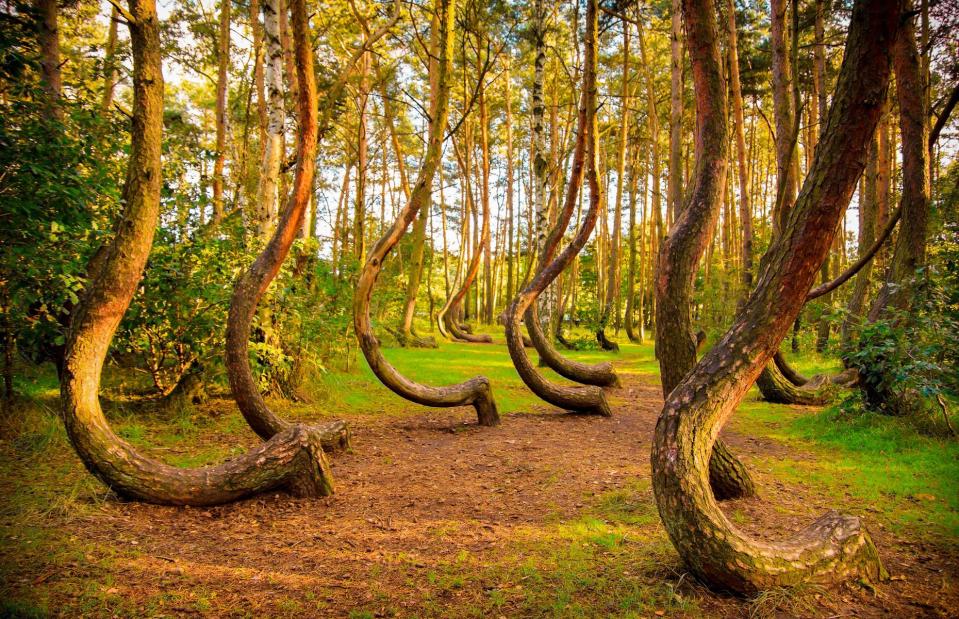
seawhisper/Shutterstock
Gryfino’s brilliantly bonkers Crooked Forest, or Krzywy Las, is filled with around 400 pine trees, each with a near-identical bend in the base of its trunk. Their wonky appearance has sparked many theories, including that a snowstorm or gravitational pull morphed their shape. Others suggest they were deliberately shaped with tools. None have been proven which makes these strangely uniform canopies all the more intriguing.
Lake Abraham, Alberta, Canada
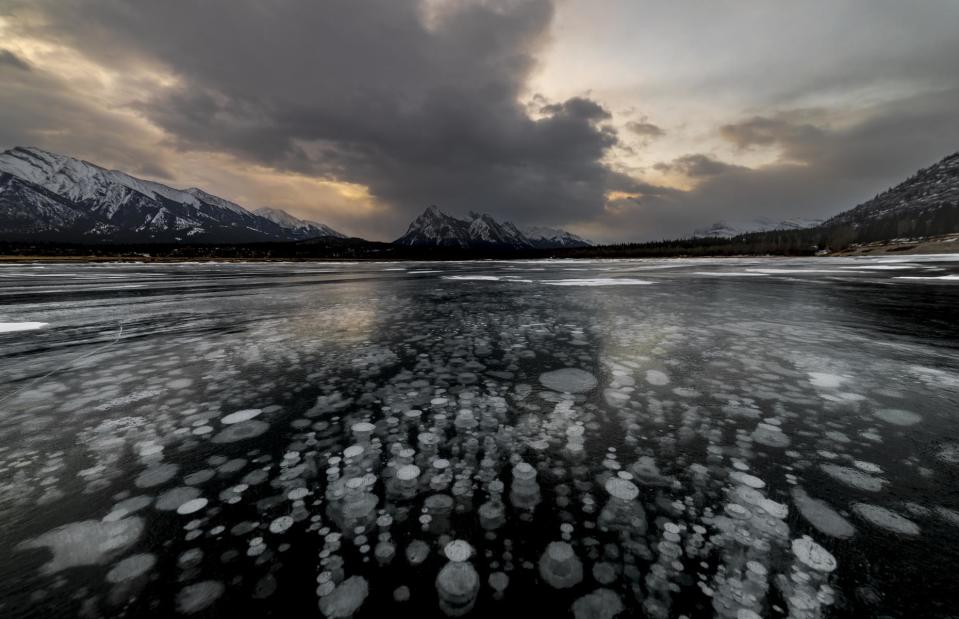
Adam Goodwillie photos/Shutterstock
Most of the year, this reservoir in western Alberta is an attractive body of water backed by part of the Canadian Rockies. In chillier months it transforms into a magical winter wonderland when what appear to be Christmassy baubles or snowballs form beneath the surface. The truth is less romantic, as the suspended white orbs are pockets of methane gas formed when organic matter decomposes and is frozen into clumps.
Teotihuacán, Mexico
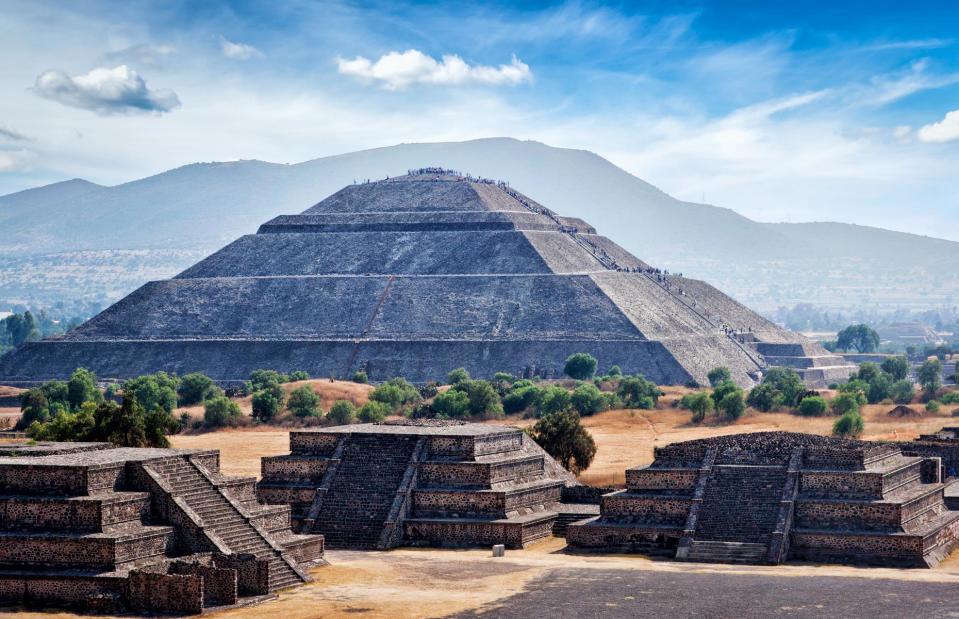
Dmitry Rukhlenko/Shutterstock
No one knows who built or originally lived in this vast and complex pyramid city, believed to have left around 1,400 years ago. The site, covering around eight square miles (20sq km), was later a pilgrimage site for the Aztecs, who gave it the name Teotihuacán. Remnants of apartment-like buildings suggest around 100,000 people lived here and worshipped at temples linked by the broad “Avenue of the Dead”.
Moeraki Boulders, New Zealand
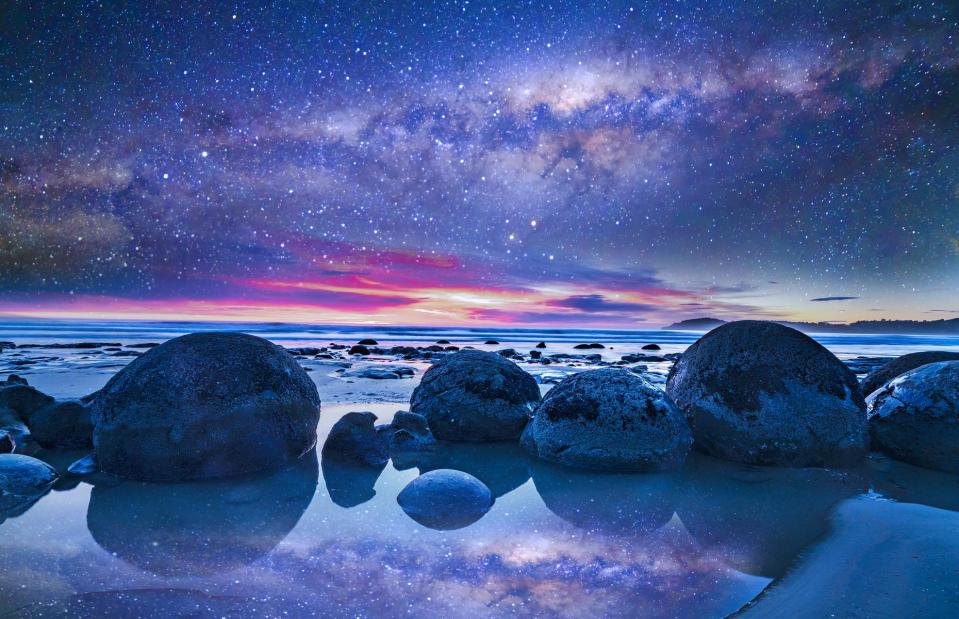
MawardiBahar/Shutterstock
Ancient Maori legend says these boulders are gourds or food containers, washed ashore from the wreckage of a canoe that brought their ancestors to New Zealand’s South Island. Another theory suggests they are alien eggs. Geology says they formed in sediment on the sea floor around 65 million years ago, eventually choosing Koekohe Beach as their home.
Easter Island heads, Chile
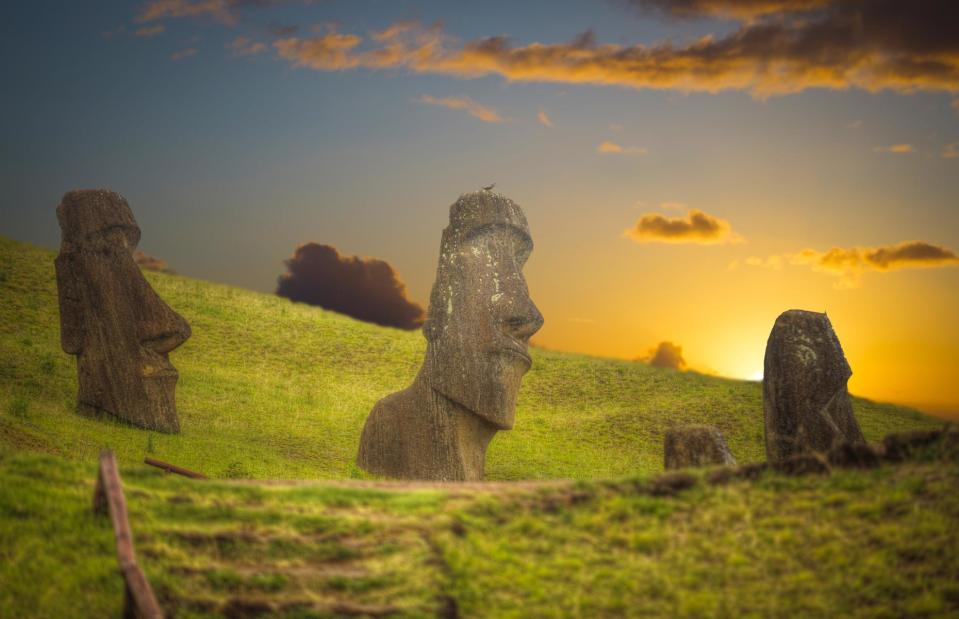
Skreidzeleu/Shutterstock
It was the Rapa Nui people who crafted and erected the 1,000-odd stone giants known as moai, around 900 years ago. But no one really knows how they managed to move the 40-foot-tall (12m) statues, which weigh around 14 tons each, into place – or why they exist at all. A prevalent theory is that the ancient Polynesians walked them from quarries using stone platforms and placed them to mark freshwater sources. The statues’ bodies are buried to leave only the curious heads exposed.
Door to Hell, Turkmenistan
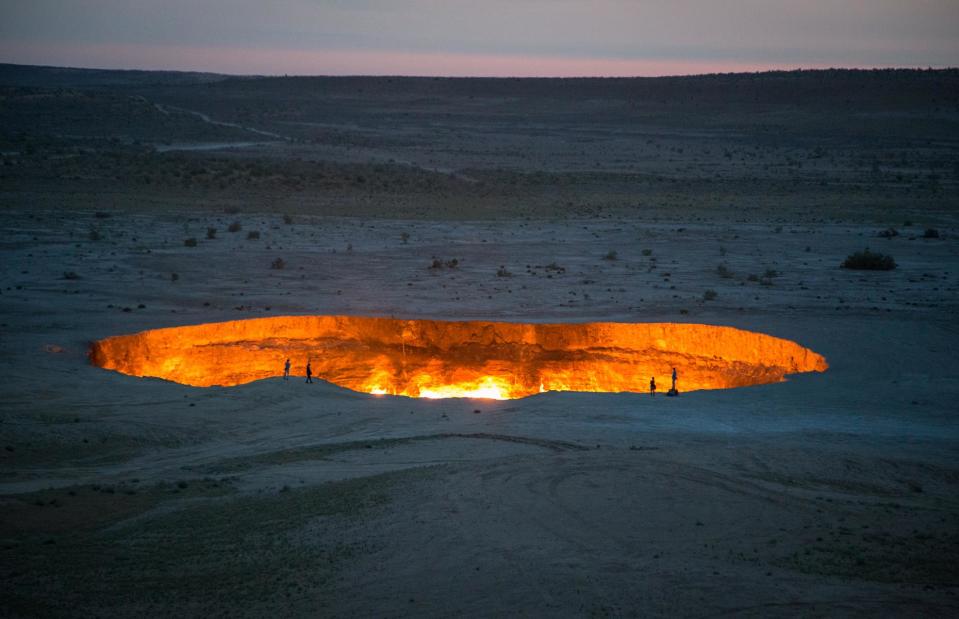
Iwanami Photos/Shutterstock
It’s the stuff that nightmares are made of – a gaping, fiery chasm tearing a hole in the Earth. The Darvaza gas crater, or Door to Hell, opened in 1971. Engineers were drilling a natural gas field in the northern Turkmenistan desert when a portion collapsed into an underground cavern. It was set alight to prevent gases from spreading and it’s still burning decades later.
Devil’s Bridge, Germany

PixilatedArtist/Shutterstock
Rakotzbrücke is so pretty it could perhaps more aptly be called fairy-tale bridge. But its name, which means Devil’s Bridge, comes from its supernatural associations. The looping structure, in the German town of Kromlau, forms a perfect circle with its watery reflection – a clever trick of engineering that some see as otherworldly.
Blood Falls, Antarctica
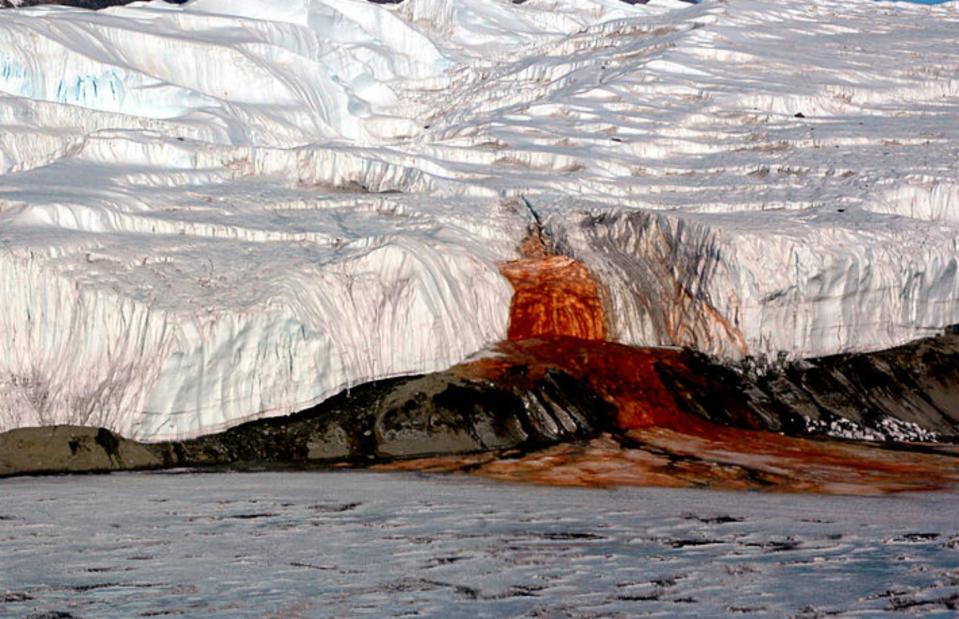
Peter Rejcek/National Science Foundation/via Wikimedia Commons
The world’s coldest and perhaps most enigmatic continent is home to a blood-red waterfall that seeps into the ice. Geologists originally thought the red colour was due to algae but the truth is actually much more interesting. It started around two million years ago when a saltwater pool was trapped inside Taylor Glacier. The sealed, airless lake’s high iron content and salinity caused the rust-red colour that eventually oozed out of a fissure in the ice.
Great Blue Hole, Belize
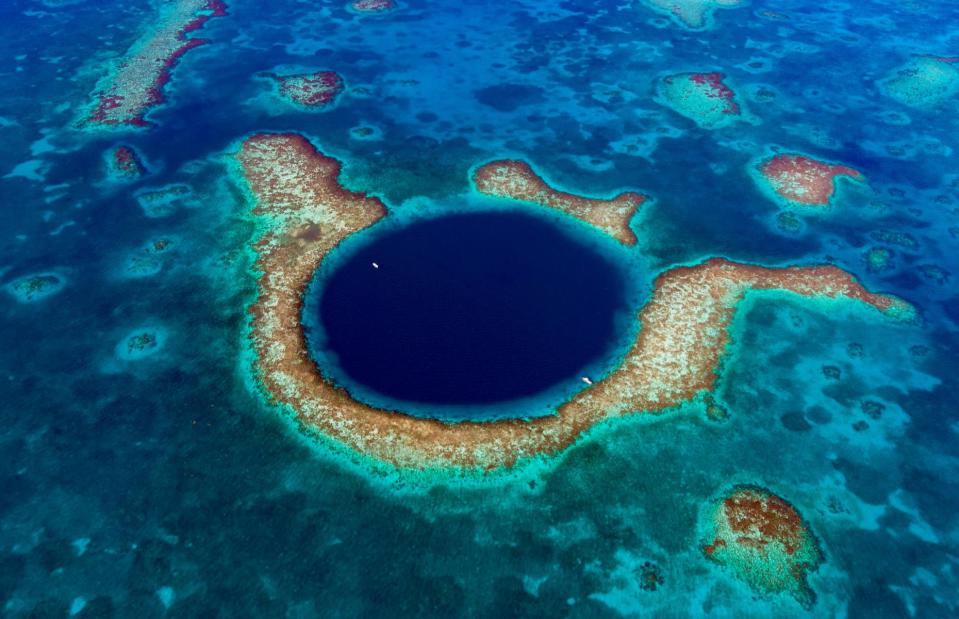
JamieB333/Shutterstock
Divers and underwater explorers including French writer and explorer Jacques Cousteau, have fallen under the spell of the world’s biggest sinkhole, which measures around 1,000 feet (304m) across and plunges to 400 feet (122m) deep. Its deepest, darkest secrets remained a mystery until late 2018, when an expedition team including Jacques’ grandson, Fabien Cousteau, and Sir Richard Branson shot video from a submarine, revealing stalactites and “unidentifiable tracks”.


